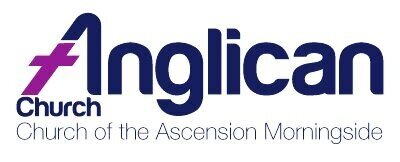In the third article I mentioned the various layers of involvement in celebrating the Sung Mass, that we are not all doing the same thing at the same time, but like a concerto various instrumental parts create the whole. This complexity creates the atmosphere of prayer and adoration. This fourth article is about orientation – facing east.
When you come for the first time to the traditional celebration of the Mass there is one thing that is immediately noticeable, which will raise the question, ‘Why does the priest have his back to the congregation.’ However, it can be correctly put that in another way, ‘Why do the priest and the congregation face the same way.’ That is the right question, and the answer is, ‘Facing the east to the place of revelation – the place where God manifested himself in Christ.’
This tradition orientation is not unusual, as it is still observed by Muslims who face Mecca and the Jews face Jerusalem, the place of the Temple for their community worship. For Christians facing east is focussed on the Mount of Olives, for that is where Our Lord entered Jerusalem on Palm Sunday to begin his Sacrificial Offering upon the Cross. It was also the place of his agony in garden, where he made the final free will choice to drink the chalice of his death. It was the place of the Ascension, and the place where he will return.
And when he had spoken these things, while they beheld, he was taken up; and a cloud received him out of their sight. And while they looked steadfastly toward heaven as he went up, behold, two men stood by them in white apparel; Which also said, Ye men of Galilee, why stand ye gazing up into heaven? this same Jesus, which is taken up from you into heaven, shall so come in like manner as ye have seen him go into heaven. Acts 1:9-11
The Christian faith is about the Incarnation, about God the Word becoming flesh, and joining the human family, our history, and our world. And so the Church Incarnational in its worship, and faces towards the Christ. There is also another factor of the East being the place of the rising sun – a symbol of the Risen Son. For this reason, facing to the place of Christ’s manifestation goes back to the very beginning of the Church’s worship.
The orientation celebration of the Mass has another dimension in facing beyond our here and now, to something that transcends all of that. Another factor is the Priest is not to be the centre of worship. In the newer forms of worship, when constantly facing towards the congregation that is unavoidable, and worship can be an inward gathering of a community – a self-enclosed circle, and the Priest predictably becomes the centre. In the worst case scenario – an entertainer: a Priest jumping down the aisle like a kangaroo on Australia Day. In North Queensland beginning worship with a joke about a parrot. Those are the very extreme, and it is possible for the traditional form of the Mass to be badly presented.
To aid the sense of facing to the Lord is the way the Sanctuary is adorned, and you can see that in the pictures of our Altar area on this website. It becomes the natural direction of prayer. Like an icon it becomes a window into the Kingdom of Heaven.
Last of all the Priest is not always facing east. There are the frequent blessing before a prayer, ‘The Lord be with you.’ The invitation to offer the Bread and Wine that it will be acceptable to God and for the benefit of the whole People of God.
Then there is the invitation to come to receive Holy Communion, as the Precious Body and Blood of Christ are shown to the congregation,
Behold the Lamb of God,
behold Him that taketh away the sins of the world.
Blessed are those who are called to the Supper of the Lamb.
Lord I am not worthy that thou shouldst come under my roof,
but speak the word only, and my soul shall be healed.
Lord, I am not worthy, Lord I am not worthy.
There is also the final blessing, the readings of Sacred Scripture and the sermon. So, there is interaction, but it does not dominate the offering of adoration at the Sung Mass of facing the Lord and his chosen place to manifest himself.

